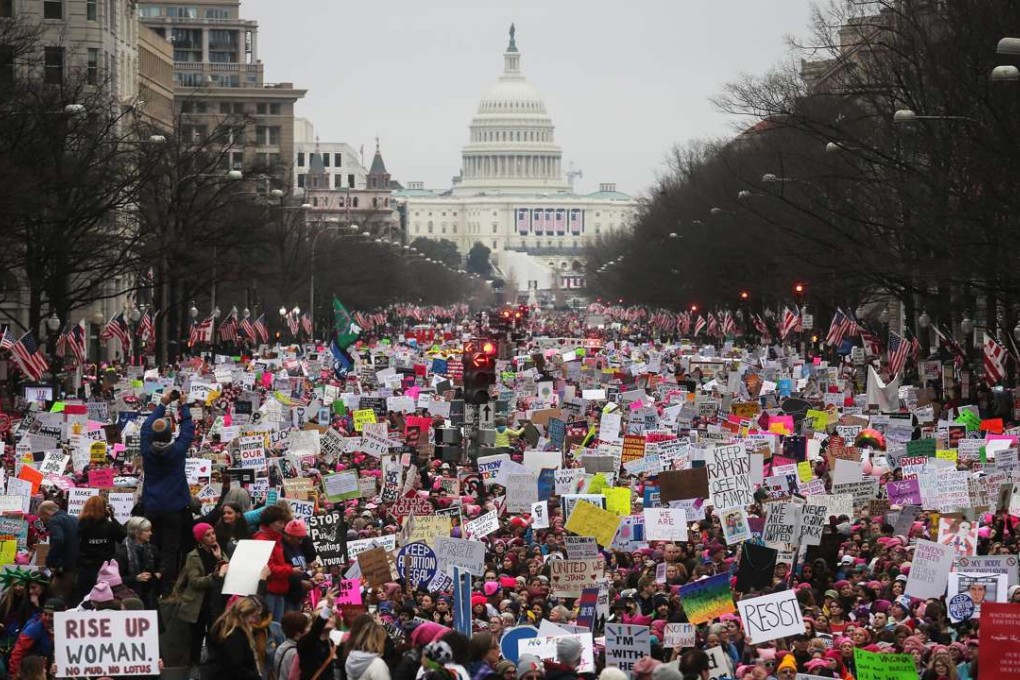Donald Trump’s march to the White House has ignited a new spirit of protest – but will it last?
President Trump later tweeted criticism of the protests, while pointing to the TV ratings for his inauguration

Not for decades, since 1960s protesters took to the streets against the Vietnam war, has a chief executive faced such visible opposition. And never in memory has a new president faced such widespread and intense criticism in the first 24 hours of his term.
This is the moment of the beginning of the revival of the women’s movement
Saturday unfolded as a jagged contrast in civic cultures: as Trump took part in the rituals of a new presidency, attending an ecumenical prayer service at the National Cathedral, hundreds of thousands of protesters flocked to attend the Women’s March on Washington on the nearby National Mall.
A sea of pink hats – the symbol adopted by many attendees – flooded past workers taking down the grandstands for Trump’s inauguration and parade on Friday. Subway stations across the DC area were so clogged that operators recommended walking miles into town. Similar turnouts totaling several million nationwide appeared in major cities from Boston to Chicago to Los Angeles.
“This is the moment of the beginning of the revival of the women’s movement,” Senator Kirsten Gillibrand of New York declared to the crowd here.
But is it? Despite the turnout, questions remain. Will protesters unified against Trump in the wake of a divisive campaign stay together or splinter? Will the already unpopular president change in any substantial way as a result of protests or dig in? And will protests accrue to his benefit or detriment among Americans who have not already picked a side in the fight?